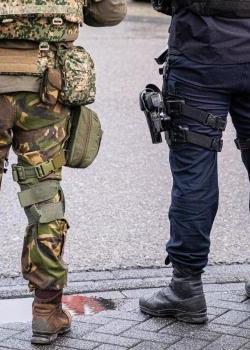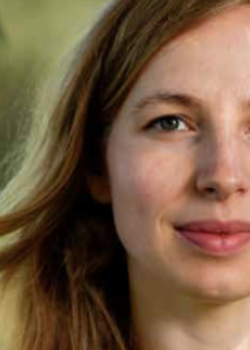Rescuers at sea
Interview with KNRM's operational inspector Joost Oosting

Joost Oosting from the KNRM in the northern Netherlands is the link to ARQ IVP in the event of calamities. He has an open line with ARQ after a major 'call-out' of the rescuers at sea.
Joost Oosting has been an operational inspector at the Royal Netherlands Sea Rescue Institution (KNRM) in the north for the past three years. Joost: “I am jointly responsible for the operational readiness of 12 rescue stations. You can see me as the link between the sailing crew, local committees and the headquarters in IJmuiden. I am also the first point of contact for the partners: the Dutch coastguard and our own trauma psychologist at ARQ IVP. We have an agreement with ARQ that we can request help immediately after a major call-out.”
"Our crews also always include less experienced guys. They, in particular, couldn’t get the images out of their heads."
A plane crashes into the mudflats
The contact with ARQ IVP dates back to 1996. Joost: “A plane had crashed on the mudflats. It went down in history as the Dakota disaster that killed 32 on board. The KNRM recovered the bodies. Our crews also always include less experienced guys. They, in particular, couldn’t get the images of those bodies out of their heads. We then received great help from a trauma psychologist from ARQ.
Since that plane crash, the KNRM and ARQ IVP have been working together. The psychologist explains to us what normal symptoms are after experiencing shocking events. She also tells us how you can notice in yourself or your buddy if things are not gradually getting better. If necessary, a KNRM employee can have individual conversations. We also sometimes entered into a consultation in a joint conversation. What I hear back from the men and women is that the psychologist is very professional. They often already benefited greatly from one or two conversations.”

Tragedy on the water at Terschelling
“In 2022 we had to carry out two drastic actions. First there was the school trip from The Hague where a 12-year-old girl got stuck under the boom of the rented ship. Four of our men resuscitated her, but were unable to save her life. Two of them took care of the badly shaken class and teachers and escorted them to the port. The second call-out was after the collision between a ferry and a water taxi between Terschelling. There were deaths there too.”
"To get our people talking, it helps if they’ve already sat down with the expert."
Evaluating every call-out
“We evaluate every call-out. After these two accidents, ARQ IVP was also present in order to recognise whether someone from the KNRM needed expert help, and to lower the threshold for any subsequent symptoms. The KNRM is a tough man’s world. To get them to talk, it helps if they’ve already sat down at the table with the expert. We repeatedly encourage people to enter into a conversation with each other and that there are no taboos. During the evaluations, we go over the entire rescue operation. We go through the action step by step chronologically and from different angles. It’s hard, but we’ve learned that it helps.”


